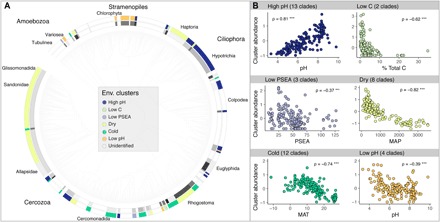Fig. 3. The phylogenetic distribution of protistan clades colored by their identified ecological preferences.

(A) Phylogenetic tree of protist clades (from 924 protist ASVs that were detected in >10% of the 180 soils). The inner ring shading indicates protist clade membership clustered at 96% patristic distance for clades with predictable ecological distributions, and the outer ring colors identify the environmental cluster memberships for those clades (see table S2 for details). PSEA, precipitation and seasonality. We note that this phylogeny is based on short read data and not intended to accurately represent broad supergroups. (B) Associations (Spearman’s ρ) between the standardized relative abundance of all clades within a particular environmental cluster (e.g., mean z scores) and the environmental predictor.
